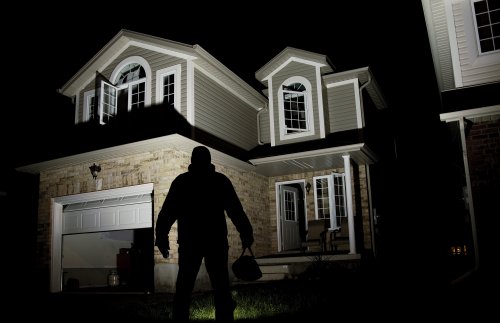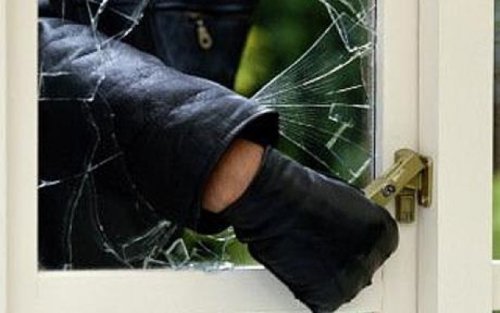The Basics of Home Security D-I-Y (part I)
With rapid economic development in the region, even Lao PDR is not exempt from a rise in petty theft and robberies. Often it seems that thieves are a step ahead of the law and of protection technology. Expatriates and Lao citizens are equal targets of crime, but expatriates often lack a local network and permanent presence within their homes. In this and future articles we will explore what the average household in Vientiane can do to improve their security.
Naturally, we at Kerberos Security are continuously improving our products to greatly decrease your changes of a brush with crime, but no system can offer complete protection 100% of the time. However, there are steps you can take to improve the security of your home and personal effects.
The following is a summary of advice from the findings of Police, security professionals and state security experts, starting with some non-official statistics drawn from these experts:
- 89% of successful break-ins occur when nobody is home, or when the inhabitants are sleeping, but with no contact with the perpetrators.
- 3% of break-in attempts escalate to violence
- 97% of injuries in these cases occur due to escalation brought on by interference on the part of the victim.
- 52% of successful thefts are opportunistic, where the victim unwittingly gave access to a thief (doors left unlocked, items left in the open)
- In 37% the sole use of a communication devise or alert system employed by a resident prevented the loss or damage to property
- 64% of successfully investigated and closed break-in cases were reported promptly and the site of the crime properly secured.
- 94% of insurance claims for break-ins were covered by the insurance company when no irregularities were found in “owner’s preventative duties”.
With these statistics in mind, the following is a best practices list, so you are able to check and measure the risks and threats to your own area and begin simple actions for the prevention of theft and break-ins.
1. Access – if there was such a thing as a risk-metre, the areas bordering public areas are at the highest risk, so begin with the perimeter:
- Access points to the house: gates, doors, windows should be properly installed, maintained and locking devices, mortises, handles, automation should to be checked regularly for the best performance.
- Locks, doors and gates (even a developed mortise and non-reproducible keys,) are only effective if they are in use, so ensure that your doors are closed and your gates are locked, even when you are home.
- Ensure that your keys and opening devices are kept secure, out of reach of outsiders, and locks replaced when keys are lost. Keep track of your extra keys for guests and staff.
- Consider asking the landlord to change the locks at the time of your tenancy
2. Visibility – again, starting with the perimeter of your residence consider what can be seen from outside:
- Perimeter fences with sufficient height or sight blockers will limit visibility to the public
- Curtains and/or reflecting window foil will also deter thieves from planning a crime.
3. Unusual Activity: knowing the people in your neighbourhood is a good start, then remember the following:
- Keep your eye open for strangers in your area, especially recurring visits of someone looking in your area.
- Consider approaching a stranger and asking “is there anything I can help you with?” or “Are you looking for something/someone”. A face-to-face encounter of this nature deters thieves likely to assume that the area is well watched.
4. Others with Access: besides yourselves you may have other people with access to your residence intermittently or full-time.
- Ensure that you have selected your staff carefully and that they understand that access to your residence is for them alone, unless otherwise discussed. It is possible to obtain a “certificate of good conduct” to mitigate any doubt during the selection process.
- It is best if your staff do not have access to keys, codes, schedules or your confidential information. While your staff may be honest you do not know what those close to them might learn inadvertently that could lead to a theft.
- Keep your valuables in a locked place; this keeps limits the opportunity for theft including in a break-in situation.
- When repair teams and other service people attend your home ensure that you or your staff are present to oversee the visit. It is important to brief your staff each time people are expected to the house and for what purpose so they are prepared for each visit.
 5. Confidential Information – is best kept out of the hands and away from the ears of thieves:
5. Confidential Information – is best kept out of the hands and away from the ears of thieves:
- Do your best to keep your travel schedule, working hours and routines confidential, rather than arm someone with that information.
- Keep the dates of your absences relaxed only revealing the timing to your most trusted staff member.
- Consider asking a friend to drop in and check on your house from time-to-time.
In future articles we will continue to discuss the key elements of prevention. In the meantime, think about checking around your household using these best practice tips to improve your security. We wish you a peaceful and safe time until next issue.
This article has been provided by Kerberos Security – the leading security service provider with focus on technical expertise, quality and partnership, in Laos since 2006



